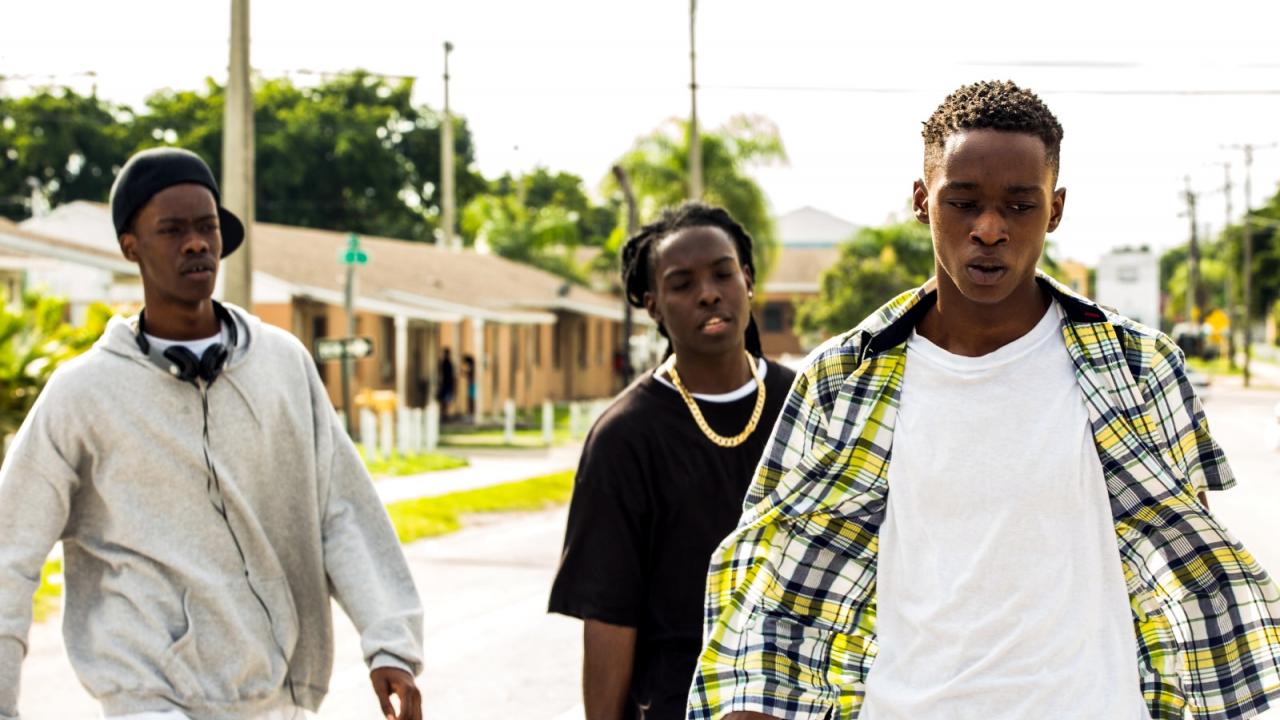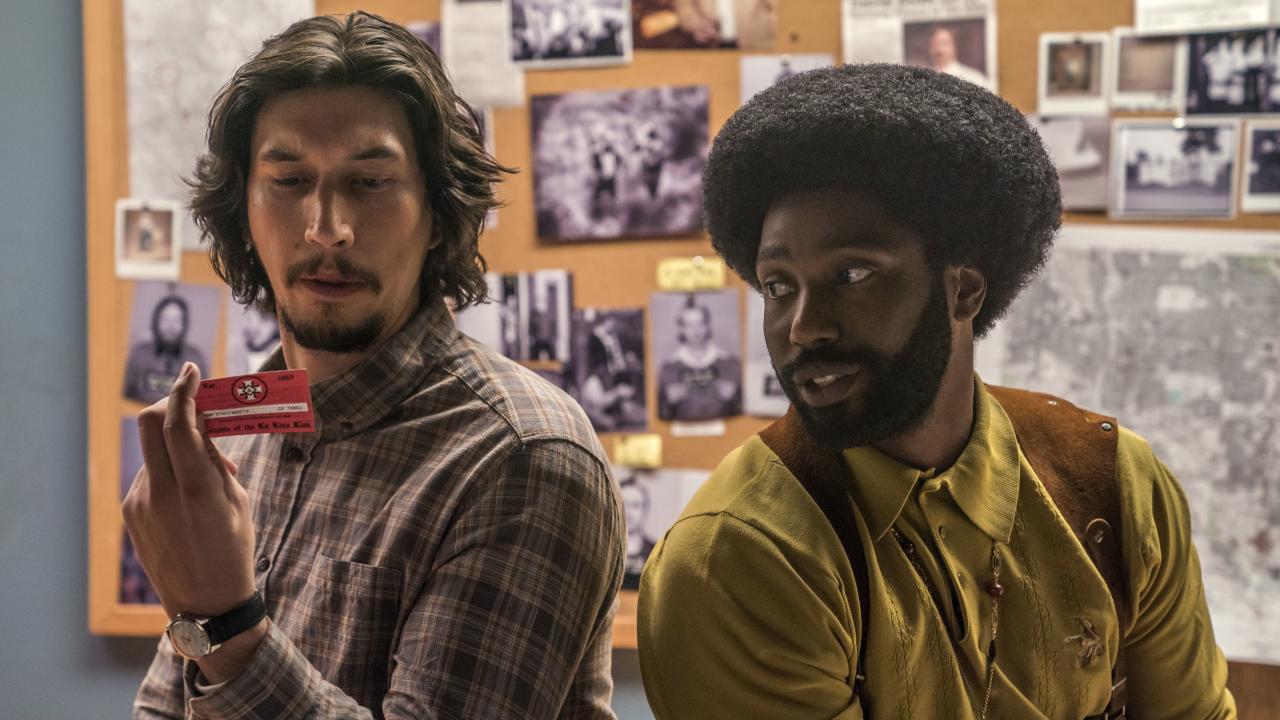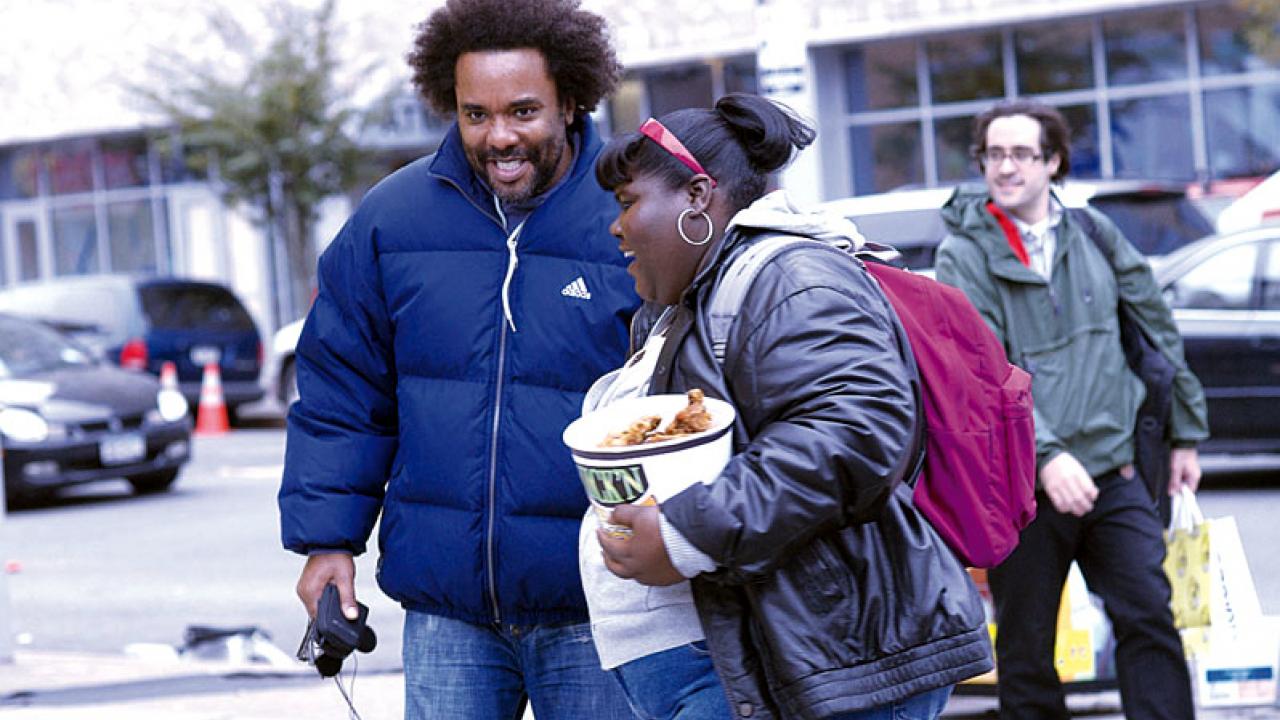Kategorie: Course Material in English
"If Beale Street Could Talk" – Worksheets
Three exercises concerning "If Beale Street Could Talk" recommended for school subjects English, German, Politics, Social Studies, Ethics, Religion from Grade 10
Exercise 1: Introduction to the Film "If Beale Street Could Talk"
Subjects: English, German, Social Studies, Politics, Ethics, Religion from Grade 10
Before going to the cinema:
a) Watch the following scene from "If Beale Street Could" Talk, in which the protagonists Tish and Fonny are to be seen on the roof of a building where they have just looked at an apartment. What experiences undergone by the main characters are reflected here?
b) Now watch the Zum Inhalt: trailer. Then formulate a synopsis of the film in three to five sentences.
c) Discuss what genre of film "If Beale Street Could Talk" belongs to. Give reasons for your decision.
While at the cinema:
d) While at the cinema, split up the task of examining the main characters, their central conflicts and the cinematic means chosen by director Barry Jenkins (such as Zum Inhalt: camera angles and Zum Inhalt: perspectives, Zum Inhalt: sound and Zum Inhalt: colour design). Write down your observations in the form of key words.
After going to the cinema:
e) Discuss the results of exercise d) in terms of characters with your classmates. Record the outcome of your deliberations in a table.
| Character | Characteristics | Conflicts |
|---|---|---|
| Tish | ||
| Fonny |
f) Now compare your results from exercise d) regarding cinematic design. Discuss the various effects of this design.
g) In an interview with Zum externen Inhalt: kinofenster.de (öffnet im neuen Tab) director Barry Jenkins emphasizes that the novel on which the film is based, "If Beale Street Could Talk" (1974), tells the story, on the one hand, of the injustice of American society and, on the other hand, a love story. Divide your learning group into two groups, A and B.
Group A: Watch the Zum Inhalt: scene that shows Fonny and Tish on the street.
Group B: Watch the Zum Inhalt: scene that makes clear why Fonny cannot be the perpetrator.
In each group, analyze the cinematic devices with which Barry Jenkins portrays the two facets of the novel on which the film is based. Then present the results of your deliberations.
h) Write the script for a Vlog with a of the film. Describe the two main characters and their conflicts (Exercise b) and e)) and explain the choice and effects of the cinematic means used (Exercise f and g). Your film review should conclude with a judgment of whether "If Beale Street Could Talk" is worth seeing/not worth seeing. Finally, record the Vlog.
i) Present your results to each other and give each other criteria-based feedback.
Exercise 2: Racism and Systemic Injustice
Subjects: English, German, Social Studies, Politics, Ethics, Religion from Grade 10
Before going to the cinema:
a) In the novel "If Beale Street Could Talk Blues", the novel on which the film If Beale Street Could Talk is based, Tish says "I hope that nobody has ever had to look at anybody they love through glass." Speculate as to what you think this might mean.
b) Watch the following scene from the Zum Inhalt: movie adaptation. Then name the location of the plot and explain in your own words the dialogue between Fonny and Tish.
c) Describe the atmosphere of the Scene. What cinematic devices does director Barry Jenkins use to transport this atmosphere?
d) How should the justice system of a democratic society treat suspects? Discuss the rights you have.
e) Divide up the task into two countries and compare your expectations with the legal realities:
for Zum externen Inhalt: Germany (öffnet im neuen Tab)
for the Zum externen Inhalt: US (öffnet im neuen Tab)
After going to the cinema:
g) Compare your results. Discuss the extent to which your expectations from Exercise d) in "If Beale Street Could Talk" were fulfilled/not fulfilled.
h) Form small groups. Carry out research on discrimination in the US justice system. Pay special attention to pretrial detention and prison conditions. Use the background article by Astrid Franke as a basis for your research. Outline the results of your work in short presentations which should also include a visualization of the facts and figures. Establish whether Fonny can be considered a once-off case or part of a wider pattern.
i) Watch again the scene in which important facts regarding the crime are detailed. Write down the most important facts in a list of key words.
j) Now imagine that you are Fonny‘s lawyer. Prepare closing Zum externen Inhalt: closing arguments (öffnet im neuen Tab) aimed at securing an acquittal for Fonny. Write down your rhetorical strategy, taking into account the results of Exercises f) and g).
k) Deliver your closing arguments in front of your learning group. Then discuss and evaluate how convincing the individual speeches were. Explain your reasoning.
Exercise 3: "If Beale Street Could Talk" as a Film Adaptation
Subjects: English from Senior Classes
Before going to the cinema:
a) The feature film "If Beale Street Could Talk" is based on the novel "If Beale Street Could Talk ", 1974) by James Baldwin. Using a book as a basis for a theater play, movie or TV show is called Zum Inhalt: adaptation. Discuss in class the adaptations with which you are already familiar.
b) Consider together why directors might choose adaptation as a form. Write down your thoughts. What are the criteria for a successful adaptation?
c) Read the opening lines of "If Beale Street Could Talk" together and then split up and read more excerpts. Outline the excerpts in short presentations. Summarize the plot with details of location, time, characters, narrator and linguistic devices.
d) Write a short exposé, in which you outline the cinematic devices you would choose for your own adaptation of the novel (Zum Inhalt: camera work, Zum Inhalt: color and , narrator and Zum Inhalt: music). Explain your reasoning.
While at the cinema:
e) Pay close attention to whether the passages of the novel you studied in exercise c) also appear in the film and examine the extent to which the novel differs or does not differ from the film. Write down your observations immediately in bullet points after watching the movie.
After going to the cinema:
f) Compare your observations. Discuss which directing decisions by Barry Jenkins you think worked and which you think worked less well. Explain your reasoning.
g) In an interview with Zum externen Inhalt: kinofenster.de (öffnet im neuen Tab), Barry Jenkins says the following about the situation in the US: "The media are dominated by the white perspective. And a white person doesn't encounter a person like Chiron or Tish every day. There is a lack of black stories." Examine the extent to which this statement can be applied to Germany. Whose perspectives are underrepresented in the media here?


